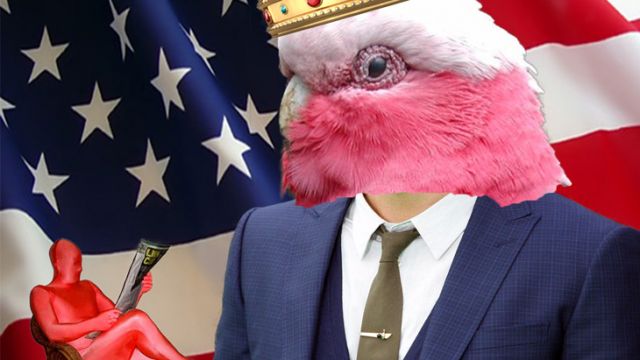The Legend Of King O’Malley
Written in 1970 this show is based around the colourful life and controversial times of King O’Malley, a Texan, who dabbled in a variety of occupations including founding his own religion, before moving to Australia for his health. He held public office in South Australia and became a Member of the House of Representatives in 1901 in the newly formed Commonwealth of Australia, having claimed he was a Canadian by birth.
As the audience enters the theatre we are in a church meeting with the cast onstage singing and dancing. O’Malley is the charismatic leader of this church and we also meet Mr. Angel, the devil to whom he has sold his soul. Act 1, continuing with the Avangelist theme, moved slowly as O’Malley verbally wrestles with Mr. Angel over his new-found religious fervor conflicting with the need to make money.
Act 2 finds O’Malley in Australian Politics and the pace increases as he debates with Billy Hughes. This act sees the actors taking on a variety of roles as they mock the honorable members of parliament and enjoy the Labor Party Party!
We learn about his and Australia’s views on women’s rights, immigration, transport, and conscription, which was to be his undoing. It is sobering to think that these issues that were being debated in the early 20th century, were still hot topics in 1970, and discussion continue to the present day.
The principal roles of O’Malley, Mr. Angel, and Billy Hughes were well acted and by the end I was left interested to learn more about King O’Malley.
There was great use of a small space with the show using the traditional divises of music hall, revue, panto and vaudeville. The cast was confident in their moves and dialogue, but lacked strength in the chorus vocals. This was not helped by the amplified music overpowering the vocals, causing much of the lyric and dialogue over underscoring, to be lost.
Lighting was unconventional, with hardly any front light, and strong low side light from one side (provided by Strand Patt 23s mounted sideways!). It just worked from where I was sitting on the extreme stage left, but may have been a bit dark for the majority of audience.
This is an historically important piece of theatre, which informs us about Australian politics and opinions of two eras – the early 1900’s and 1970, and ultimately makes us reflect on our current views.
Shirley Jensen
Subscribe to our E-Newsletter, buy our latest print edition or find a Performing Arts book at Book Nook.

